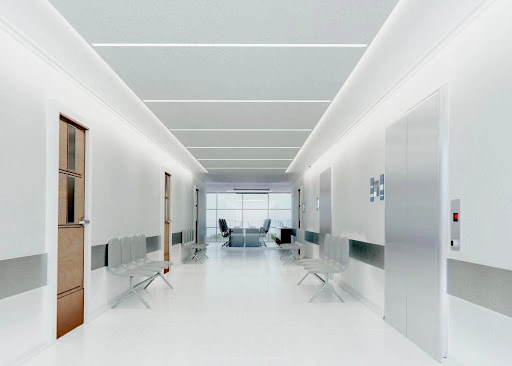Choosing the Right Flooring for Healthcare Facilities A Guide to NHS Clinical Flooring

There are many ways to switch up the interiors of any health facility. However, there’s one vital aspect that’s commonly overlooked, and that’s the flooring. Choosing the right flooring isn’t a random task that should be handled with minimal interest. Instead, proper care should be taken to ensure that whatever is chosen delivers highly on performance, safety, and comfort.
What You Hope to Gain
What’s the big idea behind dedicating huge time and effort to picking the right flooring? Well, it’s simple, you get to achieve the following:
- Reduced stress on patients who need to get around the facility
- Improves the safety of patients and prevents accidents such as slips and falls from happening
- Offers a good return on investment
- Ensures the overall satisfaction of patients
How Do You Pick the Right Flooring for a Health Facility?
Before meeting up with the nearest commercial flooring contractor, there are several factors to look out for in any flooring before making a verdict. These include:
- Cleanliness: Every part of a healthcare facility should be sanitised properly to maintain the safety of the patients. And that includes the floor, which should be sealed well enough to prevent microbes and germs from settling and developing them.
- Noise absorption: In every health facility, peace and quiet are crucial. Patients will need to rest, and workers will need to concentrate, so a noisy floor has no business in a healthcare centre.
- Aesthetics: While sanitisation and noise management help create a conducive environment, patients and families who visit will always feel at home when the aesthetics of the flooring is also on point.
- Cost-effectiveness: At the end of the day, the flooring has to be worth the money spent on it. That can only be known through the value of its performance and how it matches up to the cost of purchasing and installing it. Every commercial flooring contractor must guarantee durability and strength to withstand heavy foot traffic, rolling of equipment and food carts, as well as the moving of patients in wheelchairs and crutches around the facility.
- Cushioning: The easier it is to walk on a floor, the better. For healthcare flooring, emphasis should be placed on the level of cushioning available. This will ensure that patients with struggles don’t have it worse when walking.
- Safety: The flooring shouldn’t be made to be too hard as that can cause some issues around the safety of the patients. There should be some give to prevent patients from falling.
- Slip-resistance: The flooring should be firm with an all-round smooth finish. That way, there are no bumps on the way that could cause accidental falls and injuries. It ensures the safety of patients as well as visitors and staff of the facility.
Conclusion
When choosing flooring for healthcare facilities, it’s always important to consider the needs of the patients, healthcare workers and givers, and the occasional visitors. At the same time, emphasis should be placed on safety and convenience before selecting what flooring sheets to use.
